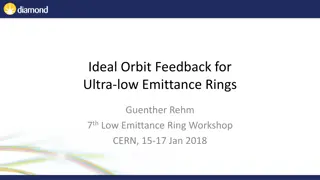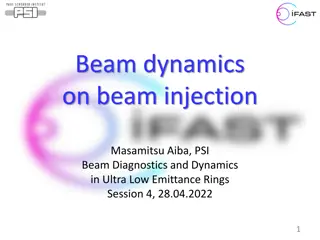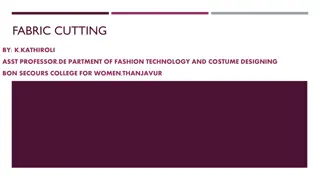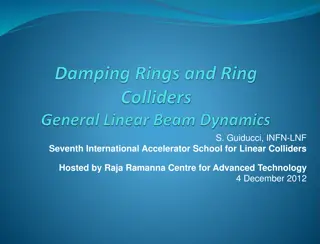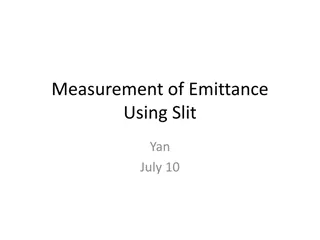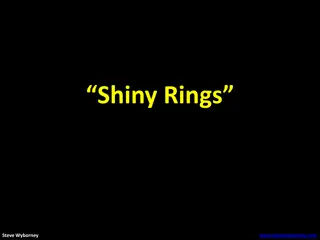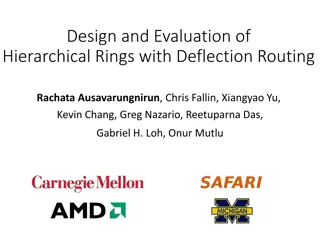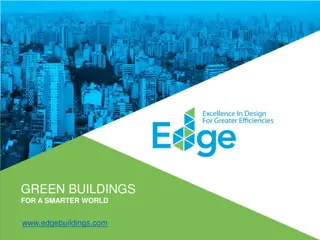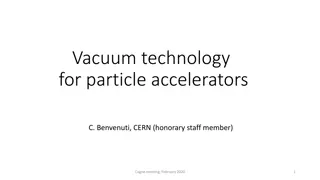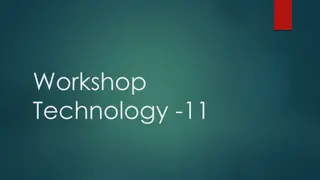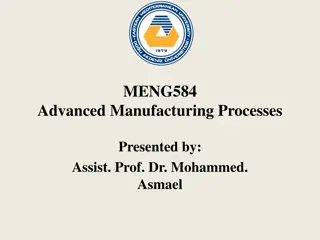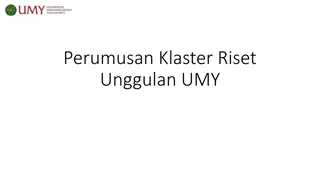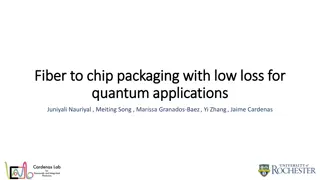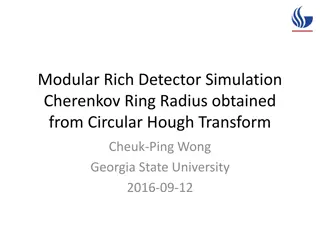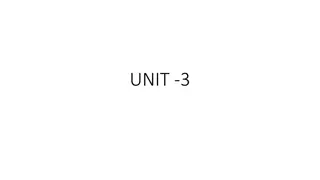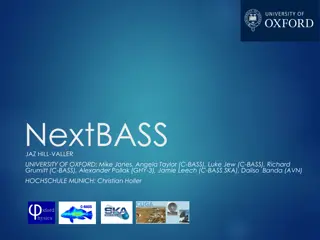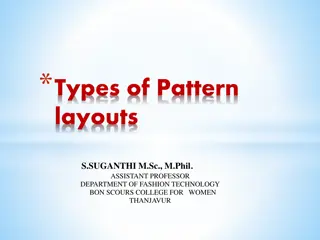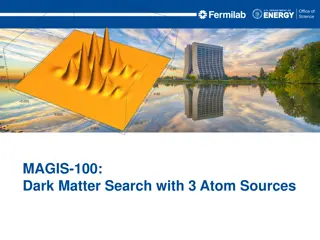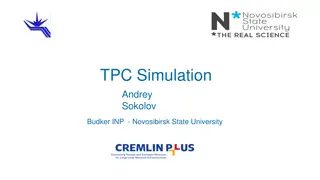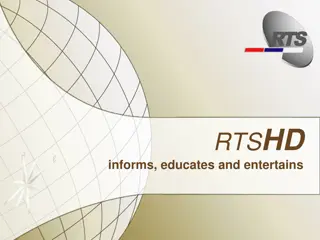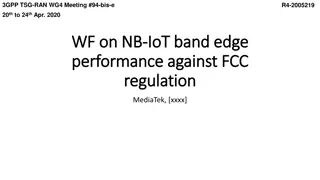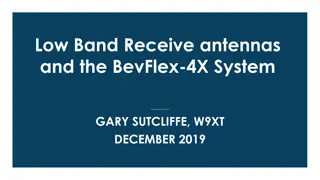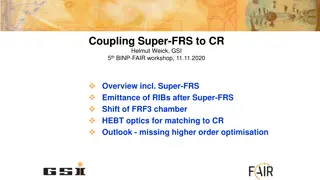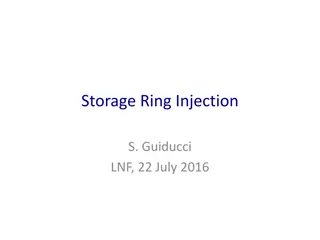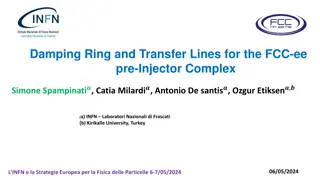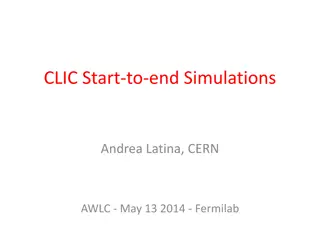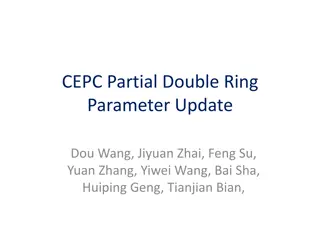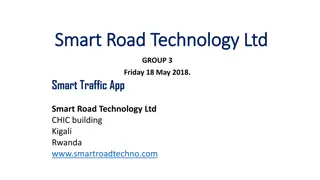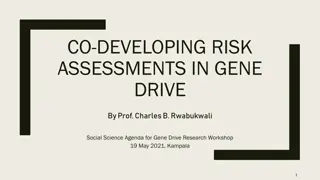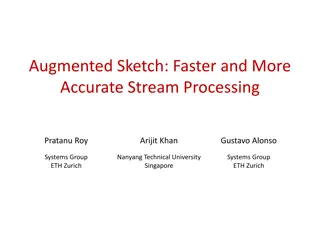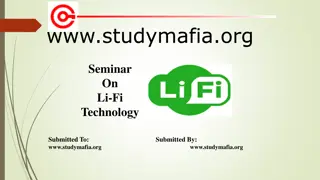Cutting-Edge Technology in Low Emittance Rings Development
Cutting-edge technology in low emittance rings is being advanced through the EuCARD-2 project, co-funded by partners and the European Commission. Key topics include magnets, wiggler development, RF systems, and impedance aspects. Recent discussions at ALERT2014 highlighted advancements in NEG coatings, vacuum diagnostics, beam size measurement, and reliability of solid-state amplifiers. The focus is on achieving better beam control, instrumentation, and system reliability for future low emittance rings.
Download Presentation

Please find below an Image/Link to download the presentation.
The content on the website is provided AS IS for your information and personal use only. It may not be sold, licensed, or shared on other websites without obtaining consent from the author. Download presentation by click this link. If you encounter any issues during the download, it is possible that the publisher has removed the file from their server.
E N D
Presentation Transcript
Low emittance rings technology EuCARD-2 is co-funded by the partners and the European Commission under Capacities 7th Framework Programme, Grant Agreement 312453
Low emittance rings technology Review of technology issue for low emittance rings and summary of ALERT workshop, John Byrd (LBNL) Magnets for the diamond DDBA upgrade, Christopher BAILEY (Diamond) Nb3Sn wiggler development, Laura Garcia Fajardo (CERN) NbTi wiggler for ANKA, Steffen Hillebrand (KIT) Magnets for the ESRF upgrade phase II, Gael Le Bec (ESRF) DAFNE kickers, David Alesini (LNF) CLIC Kicker system development and experimental tests in low emittance rings, Carolina Belver Aguilar (IFIC) Conceptual design of the CLIC damping rings RF system, Alexej Grudiev (CERN) Review of impedance aspects of NEG coatings, Sergio Calatroni (CERN) Update on NEG electromagnetic properties characterization at high frequencies, Eirini Koukovini Platia (CERN) NEG coatings in very high aspect ratio beam pipes, Sergio Dos Santos (CERN)
Hot Topics at ALERT2014 Vacuum-NEG coating Magnets-alignment and measurement BPMs and Orbit Feedback Beam size measurement and other diagnostics Injection kickers and pulsers RF Systems including Harmonic RF Multibunch feedback and instabilities SCU designs and concepts Positrons: EC studies at CESR-TA LERings, Sept 2014 3 Office of Science
Highlights from ALERT 2014 NEG coating of complicated structures achieved in MAXIV (collaboration with CERN) Vacuum diagnostics and beam losses using Bremsstrahlung Impressive reliability of solid state amplifiers MAXIV magnet concept with common solid iron block works including alignment tolerances BPM read-out electronics not a problem but button pickups (impedance) & mechanics (stable to <1 m) are more critical, FPGAs have huge potential but still complex -polarization method has huge potential for measuring down to 1 m beam sizes Kickers with fast rise time, stable flat top and low impedance are necessary for future low- -rings Solid state amplifiers for RF systems extremely reliable and modular Passive vs active harmonic cavities, SC or NC? Feedback systems for DAFNE target low noise, more sensitivity, large dynamic range, better use of power signals Impressive e-cloud instrumentation at CESRTA (shielded buttons, RFAs, )
Highlights from this workshop Magnets DDBA upgrade of DIAMOND used to provided additional beamline but also expertise of building short, highly packed magnet cells with relatively high fields ESRF dipoles (longitudinal variation and gradient), quads (85 T/m) are challenging, but magnetic design done and engineering well advanced, prototypes in progress NbTi magnet (3T, ~5cm period) with conduction cooling built in BINP with CLIC specification alsmost ready to be delivered to ANKA (watch-out for splices!) Nb3Sn prototype parameters (>3.5T, period < 4.8cm) being worked out at CERN for similar collaboration with KIT Kickers DA NE injection kicker (elliptical tapered stripline) with low coupling impedance and deflection field quality developed to be adapted for horizontal feedback system Laboratory measurements of CLIC stripline kicker in progress, with good agreement for conductivity and longitudinal impedance
Highlights from this workshop RF design Concepts for high frequency RF system (1-2GHz) with tight phase jitter tolerances and subject to large transient beam loading have been developed, low level RF system design quite challenging Vacuum Impedance behaviour of NEG films well described by textbooks but some special cases (thickness changes, high frequency, roughness effects) need to be considered carefully in the design Successful benchmark of the waveguide method in X-band, investigate the effect of non uniform coating, promising beginning for the high frequency measurements
Low emittance rings technology discussion Participants: C. Belver-Aguilar (CERN), A. Bernhard (KIT), J. Byrd (LBNL), S. Calatroni (CERN), G. Decker (ANL), L. Garcia Fajardo CERN), R. Hettel (SLAC), S. Hillenbrand (KIT), S. Marques Dos Santos (CERN), Y. Papaphilippou (CERN) Mainly focused on vacuum and magnet technology
Magnets What are the apertures and the gradients required in ultra low emittance rings? 22 to 30mm diameter magnet bores now typical. For straight vessels for IDs, 5-6mm internal height is practicable (even smaller for special optics and purposes) but limits are set by vacuum considerations and the ability to reliably apply NEG coating. Impedance budget scales with gap cubed There are limits also set by the need to extract the light, (opening angle ~ 1/ ) but this is again a function of the photon energy, optics,.... There is no fundamental barrier for shrinking from mechanical point of view (machining tolerances become more difficult), there are more issues related to beam dynamics (impedance, with CSR you may get more shielding, Developments of metrology and machining are fundamental for reducing gap chambers (thermal effects, vibrations)
Magnets Can the magnet types and the high gradients required for low emittance rings be built in a practical way? Yes, for MAXIV the gradients are in the range of 40 T/m 110T/m now foreseen for Next generation SR upgrades (ESRF). For higher gradient, power consumption and tuning range become an issue. What are the main challenges in combined magnet design? (gradient dipoles, longitudinal tapered dipoles?) Mechanical pole tolerances and required field quality. Physical measurement of complex pole form. Are SC magnets needed? Only if higher gradients are required but added complications of warm bore, cryogenics, quenching, reliability for the whole ring. For up to 3T, maybe permanent magnets with low gaps are adequate. For above 3T one needs super-conducting magnets.
Magnets What mechanical tolerances are necessary on the design of the pole profile yoke and coils? Coils not so important but +/- 20micron on the pole form is required but expensive to achieve. Techniques of pole shaping, shimming to investigate to take the pressure off machining tolerances. Essential to manage temperature of machines making the magnets for best results. What are the alignment requirements? Stability requirements? Minimum 50 microns magnet to magnet to achieve low vertical emittance. 20 microns RMS diameter achieved in tunnel at NSLS2 using stretched wire (10 micron RMS in the lab) with magnets fixed on one girder. ESRF measured 20 microns RMS using stretched wire in the lab. Long term stability of floors has limits and so solutions must be by feedback systems on the beam. Maybe beam based alignment can relax these tolerances
Magnets What are the relative merits of machined block vs separate elements on girders? This is a question of the required tolerances for the displacement from magnet to magnet. Having everything on a machined block the accuracy of displacement from magnet to magnet is in the range of +/- 30 m, but also with the laser tracker for the alignment of separated elements the same accuracy can be reached. The required time for the alignment of the magnets is shorter if the magnets are on a machined block. If the magnets are integrated in a magnetic block (like MAX IV) this has an advantage if an intervention is needed. The trend is to achieve alignment tolerances without shims through machining accuracy How can the field quality be optimized (codes)? The existing 3D codes like OPERA or Radia are giving very good results. The field quality is a question of the manufacturing tolerances. How can the field quality be achieved? In the case the pole profile is given by codes, it is a question of the manufacturing tolerances. Prototypes always take a lot of time. Is there confidence now that suppliers could produce a first off and then move into production after this is approved? Are shimming and chamfer sufficient? Shimming and chamfering is required in order to increase the good field region or supressing some higher order multipoles.
Magnets Are coil trims (or magic fingers) necessary also for such magnets? The ESRF reported the use of trim coils on their PM dipoles. NSLS2 have fitted nose pieces at the ends of their dipoles to trim the dipole field by using iron or PM inserts. Are permanent magnets a viable alternative to resistive. magnets? For the bending magnets permanent magnets are an alternative (see the upgrade of ESRF). Using permanent magnets for the dipoles has the advantage that also a longitudinal gradient can be introduced in order to decrease the emittance further.
Magnets Is R&D on material necessary (linearity of the yoke material) For some permanent magnet materials there is some aging according to the irradiation by X-Rays. In order to minimize the aging it would be nice having some R&D in this area. Is lamination necessary or solid iron is sufficient? If the accelerator is always operating at the same energy solid iron is sufficient. For laminated magnets the integrated field and perhaps the integrated gradient can change from magnet to magnet because of the packing factor.
Magnets What is the minimum pole gap clearance? This is a question of the beam dynamics and the vacuum (space required for NEC and conductivity) What is attenuation of AC magnetic field through the vessel? For materials with a permeability of 1 or smaller as 1.005 there is a negligible attenuation of the field. Nevertheless this effect can be calculated with the codes. What are the solutions for the yoke modification to let the photon beam through? To let the photon beam go through one can make a hole or a gap (C- magnet)
Magnets What is the required accuracy and repeatability for splitting the magnets? The integrated field from magnet to magnet has to be in the range of 0.1%. Accordingly the required accuracy and repeatability for splitting the magnets has to be a factor of 2 smaller or has to be in the range of +/- 0.05% What are the benefits of H cs C frame? The H-magnet is symmetric and the C-magnet not, hence in general one should go for a H-magnet. Important however is the good field region and this can be reached by shims (optimized with codes). AC magnet of course is easier to measure.
Magnets How to minimise power consumption? The power consumption for resistive magnets depends upon the gap in the dipoles or the bore radius in the quads and sextupoles. With the reduction of both, the power consumption can be minimized. The power consumption can be reduced further by using permanent magnets. Are there design solutions which are used to minimize the dimension of the magnets (e.g. coil overhang in densely packed rings) Diamond are designing the back leg winding in the dipole so it does not overhang by creating a cut-out in the back leg.
Magnets Can R&D collaboration be fostered in this with similar magnet type design and construction? This can be fostered because similar projects require similar types and quality of magnets but really it is down to individual project commitment. For instance, one project could develop a PM dipole but another project develop a 100T/m quad. Can magnetic measurements with high tolerances requirements and small apertures achieve the required resolution? Now discussion to this point
Vacuum What are the vacuum challenges of working with small diameters chambers (outer diameters 20-30 mm)? NEG coatings achievable for smaller inner dimensions (5mm) even for exotic geometries (MAXIV) but with a lot of effort and careful study. Impact on cost also for the development (MAXIV) Does NEG coating works inside super-conducting IDs? There may be no need for coating because of cryo-pumping For low SEY other coatings may be more adapted (carbon, ). TiN may be an option but not for very low SEYs (need long conditioning time). Does uniformity of coating matters? For X-ray storage rings (even the next generation) bunch lengths are relatively large (unless special demands from users) so frequencies above 10Ghz do not really matter (skin depth of 5 m). For very short bunch lengths (e.g. Damping rings), very high frequencies are important, so uniformity of thickness becomes an issue.
Vacuum Is vacuum conductance a problem? Not a problem with distributed pumping. NEG coating does not pump Ar or CH4 directly but there is evidence that CH4 is pumped by NEG once there is beam in the machine. This is not fully understood, perhaps a process of ionisation. Vacuum pressure measurements through secondary effects such as measuring GB radiation (implemented at MAXIV) Is NEG coating on vacuum chambers a sufficient solution? Difficult to give a unique answer, it depends on the specific design Yes for electron rings with small diameter tubes. NSLS2 have larger vessels with antechamber and NEG strips. Positron rings have electron cloud issues so NEG coating formula needs more work to compare with TiN.
Vacuum What are the solutions for better vacuum system design (very narrow copper tube NEG coated) Possible but space between vessel and pole tips for heater jacket is needed. In-situ heat tape activation technique (see SiRIUS) should be followed up. MAXIV technique (hanging oven for ex-situ activation of very long chambers) quite impressive as well. NEG coatings can be activated by beam scrubbing as well, but it may not be efficient. Bellows need the allowance for sufficient expansion. Activation of a vacuum assembly not in-situ needs valves to protect vacuum during installation, although techniques using Neon venting do allow shorter vessels to be activated and installed without valves. A new technology of plasma applied bake out coating 0.4mm thick is under investigation and avoids Kapton film and insulation jackets.
Vacuum Is the driver of pressure specification lifetime? Not necessarily, there are considerations of beam loss, safety, instabilities (ions). So 1nT may not be the specification for all along the ring (e.g. CLIC DR need 0.1nT) Is NEG coating production capacity sufficient (long procurement time?) At present the NEG coating production capacity is not sufficient. This is a question of the industry, we need more companies to make the NEG- coating (only two) Commercial NEG coating has still quality assurance problems (cleaning, technique, ) In the meantime, CERN, ESRF, Sirius, DESY, BNL have already, or are building their own facilities
Vacuum Is more R&D required? Can R&D collaboration be fostered on good cheaper vacuum system? More R&D is required, especially for smaller beam pipes and complicated vacuum systems like absorbers. Activation temperature of NEG (180C) is too high (aluminum looses some properties at this temperature), it would be desirable to move towards 160C What is the trend in vacuum chamber material? What are the criteria for material selection (Al, Cu, SS)? Al is easier to machine and extrude, Cu has some great properties but fabrication can be troublesome depending on the hardness and it is not good for certain equipment. SS is an option but it does not conduct heat well. High currents, small diameters favour Cu and SS, but the details of any application must be considered. For low resistivity Cu coated SS could be a good solution. Ref Soleil results on radiation damage around Al vessels. Developments at CERN favour W inserts for highly stressed vessels
Vacuum What is the experience with impedance at light sources and ring using NEG? ESRF measured impedance after every vessel installation but no effect measured, similarly at Soleil, similarly at Electra. All for relatively long bunches. What is the minimum wall thickess? Maybe 0.5-1mm. Are the pressure distribution modelling codes sufficient? Is there any development needed? Molflow+ and Synrad+ are mature programmes now but still need expertise to use them There will always be scope for further development (modelling of all type of re- radiation process) Can collaboration be foreseen? NEG coatings (CERN and a lot of light sources) For material properties at high-frequency there may be room of collaboration but probably with alternative techniques (interferometry, XFELs, ).
THANK YOU for your attention



